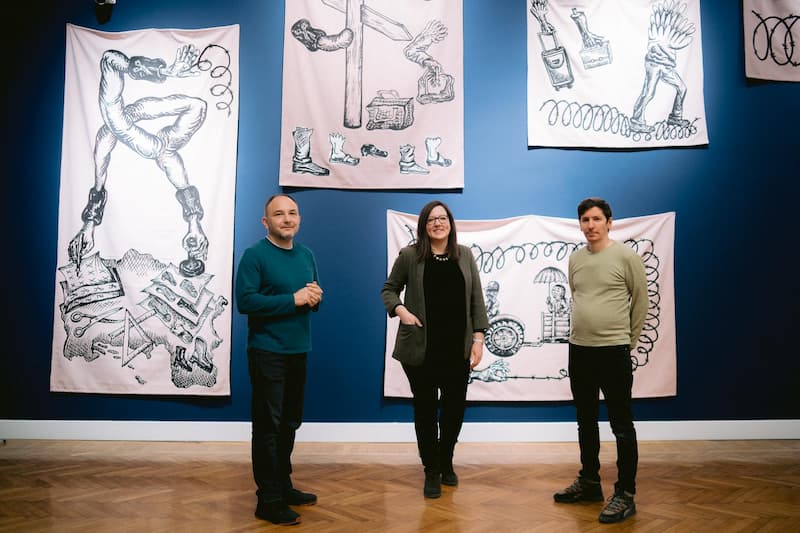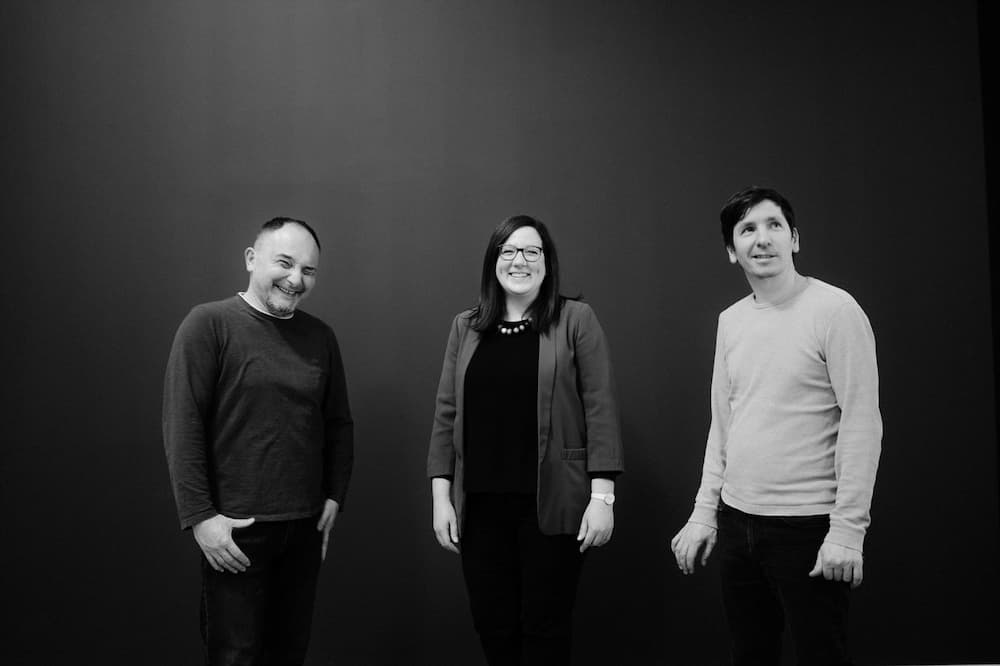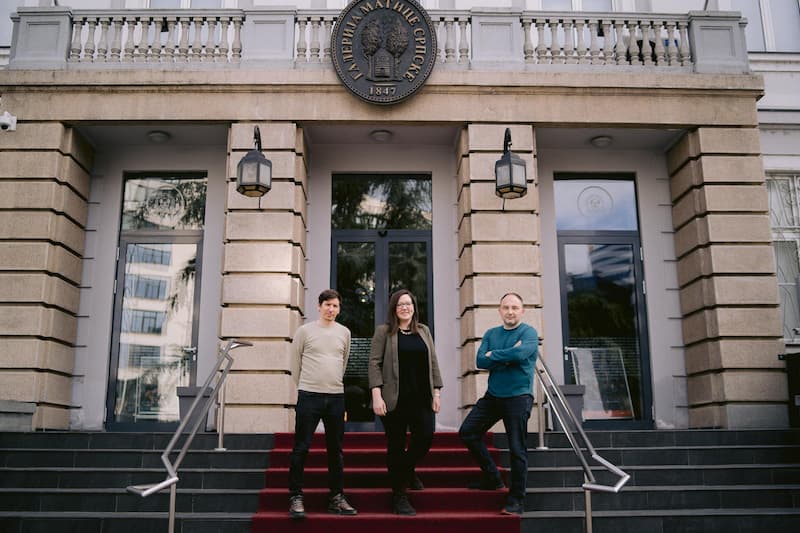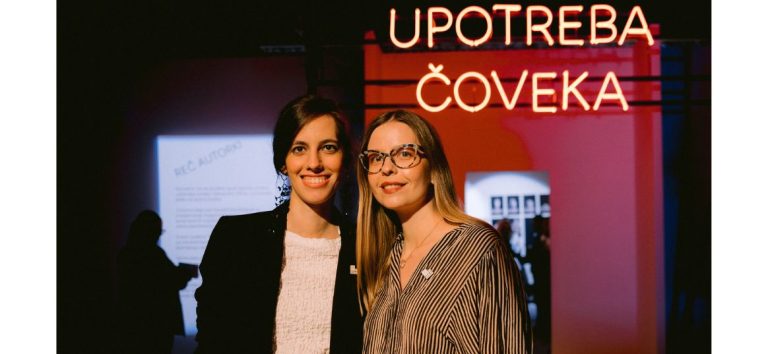For the first time, the Novi Sad audience will have a chance to see masterpieces of leading names of national and European art, as well as contemporary European artists at one place.
As part of the Migrations programme arch, which deals with the phenomenon of migration in this area, from today in the Gallery of Matica Srpska, you can see the exhibition Migrations in Art, Art of Migration, which will present works created over five centuries, examining the phenomenon of migration and intertwining cultures through works by artists whose work has marked the history of art: El Greco, Vigée Le Brun and Marc Chagall. The exhibition also brings us a story about the works of the greatest Serbian painters Uroš Predić, as well as Paja Jovanović, whose famous painting Migration of the Serbs indicates the importance of that historical event. We will also have a unique opportunity to see the works of contemporary European artists.
The author’s team of the exhibition consists of Jelena Ognjanović, museum educator and PR manager, as well as the curators-artists of the gallery, Danilo Vuksanović and Luka Kulić. For Visit Novi Sad, they brought us closer to the topic of the exhibition and the broader meaning of migrations, which are the connection between the works that we will see live in the Gallery of Matica Srpska until the end of April.

Can you explain us the concept and significance of the Migration in Art, Art of Migration exhibition, and what can visitors experience at the exhibition?
Luka Kulić: The exhibition Migration in Art, Art of Migration explores the phenomenon of social migration by re-examining the historical and contemporary context, as well as the reasons and effects of migration on societies and individuals. At the time of the current global migration crisis, we have tried to observe, examine and understand the phenomenon that affects every population and raises many ethical and cultural issues.
The exhibition does not provide answers, but gives an insight into this phenomenon through art. The idea is actually for the audience to face the notions of fear, (absence of) empathy, (mis)understanding, contradictions and humanity, but also to send a message – We are all migrants, migrations have always existed and always will.
The exhibition will be divided into three parts. How do they relate to each other and how do you see the intertwining of cultures and arts in the context of migration, the topic of the Migrations programme arch?
Danilo Vuksanović: The first segment of the exhibition is dedicated to the life and work of El Greco, Vigée Le Brun and Marc Chagall, artists who created in different epochs, and whose art influenced and shaped European culture. Afterwards follows a segment dedicated to contemporary artistic practices, presenting examples that re-examine and consider the work of contemporary art in the time of the migration crisis of the 21st century. The third segment of the exhibition deals with the famous painting Migration of the Serbs by Paja Jovanović, which, in addition to representing a historically significant event – the great migration of the Serbs, it is also the so-called patriotic icon in the consciousness of our people. In this manner, the exhibition deals with migrations at different levels – temporal, spatial, ethical and many others. A broader perspective of the phenomenon through the exhibition and the accompanying publication, which is a collection of essays by experts from various fields of humanities, gives us the opportunity to talk about the intertwining of cultures and identities, but also opens space for art to think about the present and act for the future.

How do you view the significance of such an exhibition for multicultural Novi Sad, as well as for the Gallery of Matica Srpska?
Jelena Ognjanović: The exhibition points to the Gallery of Matica Srpska as a museum of the 21st century (contemporary and critical), because it actually deals with burning issues of today’s society through artistic phenomena, connecting them with the contemporary ones. In that context, Novi Sad is an extremely important point, as a city where migration processes are constant, and which is proud of its cultural diversity. On a broader level, being aware that the migration crisis of the 21st century is a challenge for the entire Serbian society, the importance of the exhibition is reflected in the idea that we have the opportunity to reconsider our views through the language of art.
During the ceremonial opening of the exhibition, projections of works of art will appear on the façade of the Gallery of Matica Srpska. How will the opening ceremony look like?
Jelena Ognjanović: The opening of the exhibition is always an occasion to make a unique event, which the audience will additionally enjoy. Therefore, during the opening of the exhibition, works of art will be presented on the entire façade of the Gallery. The idea is to ‘revive’ works of art through video animation and enrich visitors’ visual experience.
At the exhibition, we will have a chance to see works of art from various European countries, and the famous work by Paja Jovanović – Migration of the Serbs. We assume that it was challenging to bring all these works of art to the Gallery of Matica Srpska, especially the large ones. How did the process go?
Danilo Vuksanović: The process of designing and implementing the exhibition like this is a long-term process that requires dedicated teamwork. In our case, borrowing works of art from European and world museums, as well as from contemporary artists and private collectors, was additionally demanded, having in mind the pandemic. The situation prevented physical contacts with colleagues from the museums and with artists, so the organization and exhibition of works of art was a great challenge. The envisaged concept has undergone many changes. Some European museums have not shown readiness to lend works by El Greco, Vigée Le Brun and Marc Chagall, and we have been helped by some other museums, our already confirmed partners, primarily the National Museum in Belgrade and the National Gallery of Slovenia in Ljubljana. At the same time, without any difficulties, for the first time, we established cooperation with museum institutions from Russia, the State Gallery ‘Tretyakov’ and the Pushkin State Museum of Fine Arts, which are ready to lend from their collections. We overcame the technical obstacle caused by the size of the painting Migration of the Serbs, which is kept in the Patriarchate in Belgrade, by using modern technologies, i.e., by animating the painting.

Will this exhibition also have an accompanying programme for visitors in the form of lectures and other gallery activities?
Luka Kulić: Since the exhibition is designed as a platform for discussion on the topic of migrations, we have created an accompanying programme that will offer visitors additional perspectives on this phenomenon, as well as space to think and discuss with us. Every Friday at 7 p.m., there will be talks with contemporary artists, discussions with experts in the field of social sciences, lectures and expert interpretations. In addition to this, a special programme in cooperation with the Yugoslav Film Archive will be screenings of films on the topic of migrations, while in Belgrade, the National Library of Serbia will present a selected literary fund of the library that deals with this phenomenon. As before, the Gallery will organize a special programme for children and youth through creative, drama and HearMe workshops.
The Gallery of Matica Srpska is one of the cultural institutions of Novi Sad, which, through interesting and innovative projects, impeccably works on bringing art closer to a wide audience. What projects await us by the end of the European Capital of Culture title year?
Danilo Vuksanović: After the exhibition Migration in Art, Art of Migration, in May we will have an exhibition on the art collection of Jovanka Broz, on which the Gallery of Matica Srpska and the Museum of Yugoslavia are working together. Furthermore, in the middle of the year, we are preparing another international exhibition in cooperation with the National Art Museum in Timișoara, creating a story about the common European heritage of two cities – two European Capitals of Culture. Bearing in mind that in October, the Gallery of Matica Srpska celebrates its jubilee – 175 years of existence, a large monographic exhibition about Uroš Predić will be implemented, which will be accompanied by the inclusive project Uroš Predić for Everyone. In the world of digital technologies, we have taken a step forward with a new application for HoloLens glasses, a virtual depot and the digitization of works of art on paper.
Author: Lorjana Bosin
Photo: Vladimir Veličković







